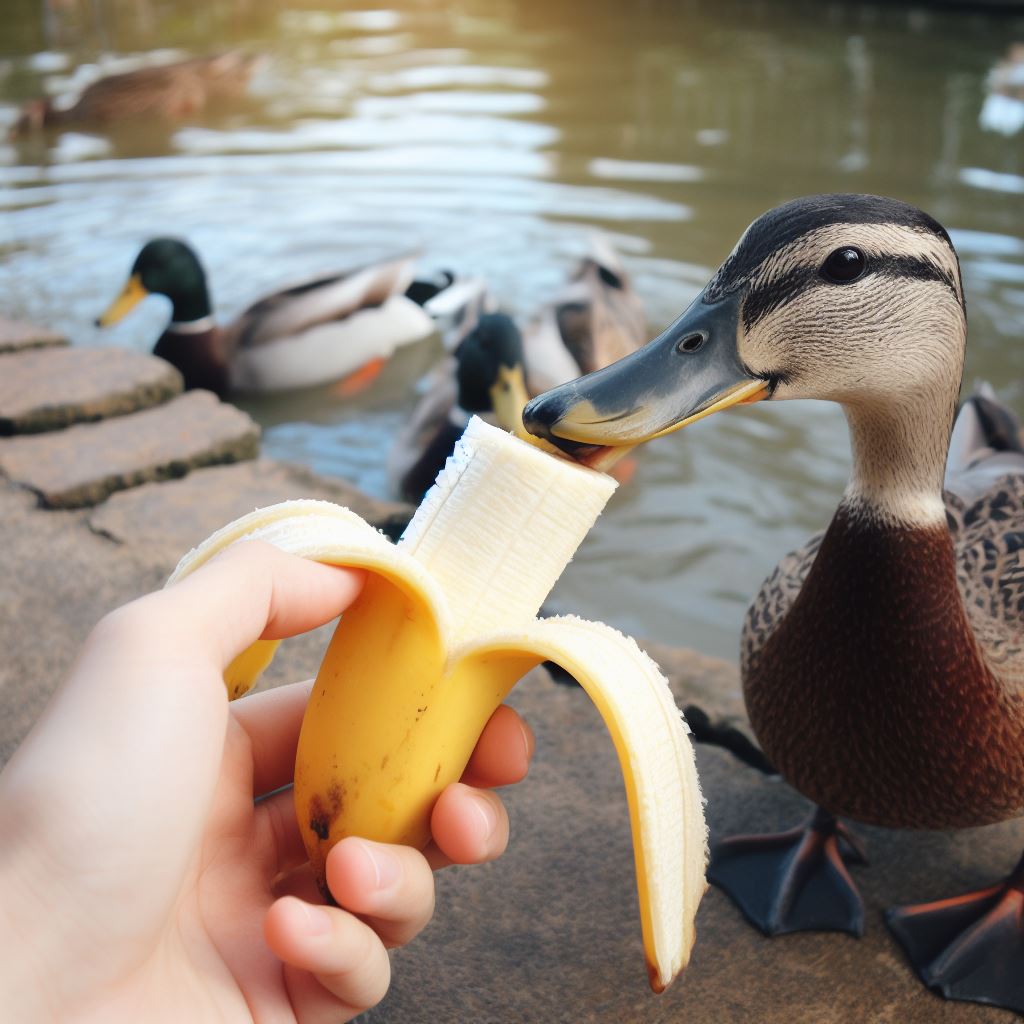Do Ducks Land Into The Wind? Unveiling Avian Mysteries

Table of content:
- Why Do Ducks Land Into The Wind?
- How Does Landing Into The Wind Help Ducks?
- What Allows Ducks To Land Into The Wind?
- Do All Duck Species Land Into The Wind?
- When Do Ducklings Learn To Land Into The Wind?
- What Problems Can Ducks Have If They Don’t Land Into The Wind?
- How Do Ducks Know Which Way The Wind Is Blowing When Landing?
- Do Ducks Ever Crash Land If The Wind Shifts?
- How Fast Can Ducks Land Into The Wind?
- Final Thoughts
Ducks have a unique ability to land into the wind, which provides them with a number of advantages when touching down. But why do ducks land into the wind? And how does this ability benefit them? In this article, we’ll explore the interesting reasons behind this phenomenon.
Yes, ducks have an innate ability to land into the wind. When approaching their landing, ducks will orient themselves to face into the direction the wind is blowing from. This helps slow their airspeed down and allows them to land more gently and smoothly.
Landing into the wind gives ducks much greater control and stability when touching down. The air flow hits their wings and body head-on, providing aerodynamic braking power. This prevents them from being pushed backwards or sideways by crosswinds.
Ducks instinctively know which direction the wind is blowing from, even at high altitudes. Their eyes are located on the sides of their heads, giving them a panoramic view to accurately judge wind direction. Specialized air sacs and nerves in their face also help sense subtle shifts in air pressure and wind speed.
Why Do Ducks Land Into The Wind?
Ducks land into the wind for several key reasons:
Slows Airspeed
Landing into an oncoming breeze provides drag that serves to slow the duck’s airspeed down significantly. This gives them much more control and stability when descending and touching down.
Without the braking action of the wind, ducks would come in for a landing much faster. This makes it more difficult to flare up and gently set their feet down at the right moment.
Prevents Being Blown Backwards
If ducks tried to land with a tailwind behind them, the airflow would catch their wings and body and push them backwards. This could cause them to stall out, lose control, and crash land.
Landing into the wind eliminates this risk, as the air hits them head-on and moves in the same direction as their flight. The wind keeps them moving forward stably throughout the landing process.
Provides Lift During Descent
As ducks descend into the wind, the relative wind continues to flow over their wings at a proper angle to generate lift. This allows them to stay aloft longer and set down more gently with less impact.
Without this extra lift, ducks would drop down much more rapidly and have a harder landing. Angling into the wind gives them a smooth, controlled descent.
Reduces Groundspeed
The headwind not only slows their airspeed, but their groundspeed as well. This gives ducks more time to flare up, level off, and gently make contact with the ground.
Less ground speed means less force when their feet finally touch down. Landing into the wind allows for short, light landings.
Lets Them Take Off Again Quickly
Facing into the wind when landing means ducks are already lined up for an easy takeoff again. The wind gives them extra lift and acceleration to get airborne quickly if needed.
Landing with a tailwind behind them would mean they’d have to first turn around before taking off. Landing into the breeze improves their escape capability.
How Does Landing Into The Wind Help Ducks?
Beyond allowing for better controlled, stable landings, landing into the wind gives ducks several other advantages:
Conserves Energy
Landing into the wind requires less effort and energy on the part of the duck. The wind does some of the work in slowing them down. This helps reduce fatigue from continual landings and takeoffs.
Requires Shorter Landings
The improved lift and drag ducks get from the wind allows them to land in a much shorter distance. They don’t need a long runway to slowly bleed off airspeed. This gives them flexibility in terms of where they can land.
Enables Safe Landings in Turbulence
Gusty winds can make landing difficult. But by facing into the wind, ducks can compensate for crosswinds and variable conditions more easily. The headwind gives them better control in spite of turbulence.
Allows Landing on Water
Unlike airplanes, ducks can safely land on water. But the impacts of hitting the water can still be harsh without proper technique. Landing into the wind allows ducks to touch down with minimal force.
Reduces Injury Risk
The greater stability and lower ground speed ducks achieve from landing into the wind significantly reduces their risk of injury. Crash landings can sprain wings or legs, but a well-executed headwind landing is smooth and gentle.
Lets Them Land Anywhere
Ducks aren’t limited to runways or clearings when landing. Their ability to touch down softly into the wind means they can land in tight spaces in forests, marshes, and other rugged areas. This versatility allows them to access food and shelter.
What Allows Ducks To Land Into The Wind?
Ducks possess specialized physical and behavioral traits that enable them to successfully land into the wind:
Excellent Vision
Ducks have panoramic vision spanning almost 360 degrees. Their eyes are positioned on the sides of their heads. This lets them accurately judge wind direction and speed when approaching to land.
Keen Wind Sensing
Specialized nerve endings and air sacs in a duck’s head allow it to detect subtle shifts in wind speed, direction, and pressure. This kinesthetic wind sense works in conjunction with their vision.
Highly Controlled Wings
A duck’s wings can be finely adjusted to capture the optimal amount of lift and drag. This level of control enables ducks to aerodynamically brake and keep the proper angle of descent when landing into the wind.
Lightweight Muscle Structure
A duck’s strong but lightweight muscle structure makes it very maneuverable in the air. Ducks can swiftly bank, change angle, and modify lift to line up and touch down into the wind.
Flexible Undercarriage
Ducks have springy legs and feet that flex to absorb impact when landing. Combined with the stability of wind landings, this cushioning enables safe touchdowns.
Flying Low to the Ground
When coming in for a landing, ducks characteristically fly low. This lets them accurately assess wind direction before orienting themselves appropriately.
Instinctual Ability
Ducks exhibit an innate ability to land into the wind, even at a very young age. It is an inborn behavior dating back millions of years of evolution.
Do All Duck Species Land Into The Wind?
The vast majority of ducks demonstrate the ability to land into the wind. However, certain duck species are better adapted for wind landings than others:
- Mallards are very skilled at landing into the wind. Their ubiquitous nature means they must land in diverse settings.
- Northern pintails also excel at wind landings. Their long, aerodynamic wings provide excellent lift control.
- Small dabbling ducks like green-winged teal may struggle landing into very strong winds due to their light weight.
- Eiders and scoters have high wing-loading that makes them less agile and able to brake when landing.
- Stiff-tailed ducks like ruddy ducks cannot use their tails to adjust lift when landing.
- Mergansers have heavily-loaded wings suited for diving, not wind landings.
So while the vast majority of ducks do land into the wind, their individual adaptations impact their skill and technique. But all ducks prefer to land into the breeze when they can.
When Do Ducklings Learn To Land Into The Wind?
Ducklings learn to orient themselves into the wind shortly after hatching. Landing into the wind is an instinctive behavior, but ducklings still must practice and refine this skill through experience.
- New hatchlings will immediately face into light winds when landing in their first few days.
- By two weeks old, ducklings can skillfully land into moderate winds. Their flight muscles and coordination quickly improve.
- It takes young ducklings up to a month to master landing into very strong winds and gusty conditions.
- Duck mothers assist by leading their ducklings into the wind when landing as a group. This models proper technique.
- Ducklings gradually learn to gauge wind speed, angle their wings, and adjust their descent to touch down softly.
- After fledging at 6-8 weeks old, juvenile ducks are as adept at wind landings as adults.
Landing into the wind is a natural behavior ducklings actively practice and master in their first few months. This crucial skill helps keep them safe in diverse environments.
What Problems Can Ducks Have If They Don’t Land Into The Wind?
Ducks can easily run into issues if they try to land with the wind at their backs or descend in gusty, shifting winds. Potential problems include:
Being Pushed Backwards
Attempting to land with a tailwind will cause ducks to be propelled backwards as they touch down. This can result in crash landings and failed takeoff attempts.
Less Control on Approach
Without a headwind, ducks have less braking power and control as they descend. Variable winds could lead to an uncontrolled collision with the ground.
Hard Impacts
Landing without the drag and lift benefits of a headwind often means harder impacts on touchdown. Winds can also force ducks down rapidly, increasing injury risks.
Bouncing and Cartwheeling
Strong updrafts or crosswinds can cause ducks to bounce and cartwheel when landing without the stability of a headwind. This can lead to injuries.
Flipping Over
If winds shift during landing, ducks can be forced down sideways. Without the ability to dip a wing into the wind, they are at risk of flipping over on their backs.
Missing the Landing Spot
Erratic winds make it hard for ducks to land precisely where intended. Being blown sideways may cause them to overshoot or undershoot the landing zone.
Facing into the breeze is crucial for ducks to manage a safe, controlled landing every time. Without proper wind technique, the risks of crash landing increase dramatically.
How Do Ducks Know Which Way The Wind Is Blowing When Landing?
Ducks rely on several senses and instincts to determine wind direction prior to landing:
- Vision – Their panoramic vision detects the movement of objects to identify wind direction.
- Smell – Sensing airborne scents drifting on the breeze conveys wind motion.
- Hearing – Listening to sounds being carried by the wind indicates its flow.
- Feeling – Feathers ruffling and skin sensations can signal the direction of blowing air.
- Instinct – An innate ability to locate and turn into the wind, even when other cues are minimal.
- Flying – The feel of wind pressure and resistance when flying shows where it originates from.
- Water Surface – Observing the ripples and wavelets on water reveals the wind’s path.
- Flags/Weathervanes – Seeing how objects are being pushed by the wind betrays its track.
- Smoke/Dust – Watching the drift path of airborne particles traces the wind’s heading.
By synthesizing these diverse sensory inputs, ducks can accurately determine wind direction from both air and ground before lining up to land.
Do Ducks Ever Crash Land If The Wind Shifts?
While ducks are highly skilled at landing into the wind, wind shifts and gusts during landing can sometimes lead to crashes:
- Sudden crosswinds may force descending ducks sideways, causing a wingtip to strike the ground.
- Headwinds shifting to tailwinds can send ducks tumbling beak over tail.
- Powerful updrafts can flip ducks upside down if they turn into the wind at the last moment.
- Hidden air pockets can drop ducks down with a sudden thud if winds are erratic.
- Striking objects like branches or power lines is a risk if winds push ducks off course.
- Confusion about wind direction in highly variable conditions increases errors.
- Younger ducklings are especially vulnerable as their wind landing skills are still developing.
However, ducks’ overall agility and reflexes enable quick reactions to changing winds during landing. While crashes do occur, they are relatively rare in healthy adult ducks.
How Fast Can Ducks Land Into The Wind?
The maximum speed a duck can land into the wind depends on the species. In general:
- Larger ducks like mallards can land at speeds up to 60 mph when flying with a 60 mph headwind.
- Medium ducks including wigeons can touch down at 50 mph with a similar 50 mph wind.
- Small ducks like green-winged teal may max out around 40 mph landing speed with a supporting 40 mph headwind.
- Actual landing speeds are typically much lower, around 20-30 mph for most duck landings.
- Only when migrating or forced down by stormwinds do ducks approach their maximum wind landing velocities.
- Headwinds well above 30-40 mph overwhelm most ducks’ ability to land safely.
So while ducks’ can theoretically land flying into the wind at speeds over 50 mph, most duck landings occur between 20-35 mph for safe control. But their maximum capabilities prove essential when navigating challenging weather.
Final Thoughts
Ducks possess a truly unique and fascinating ability to skillfully land into the wind. While this behavior is instinctive, it also requires specialized physical adaptations and constant practice to perfect. Without landing into the breeze, ducks would face much greater risks of crashing and injury.
Facing into oncoming winds grants ducks a smooth, stable landing every time. The next time you see a duck angling into the breeze and descending gracefully, remember the effort and fine-tuned technique behind this delicate process that ducks have mastered through evolution. Their consummate wind landing skills serve ducks well across every environment.
Welcome. I’m Adreena Shanum, the proud owner of this website, and I am incredibly passionate about animals, especially poultry. I founded adreenapets.com as a labor of love, stemming from my desire to share my knowledge and experiences with poultry enthusiasts worldwide.




